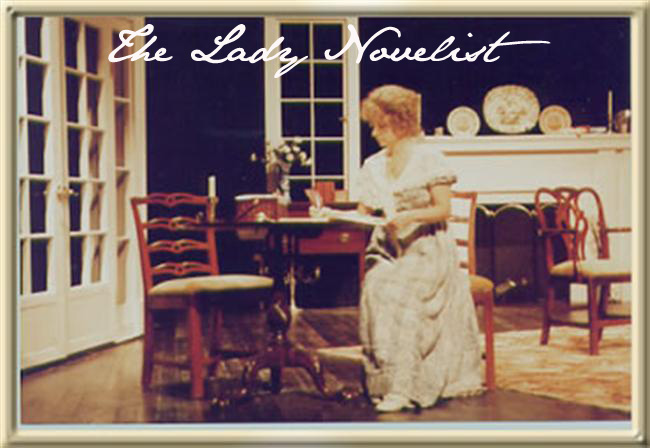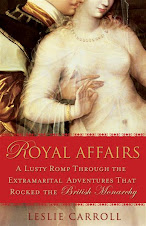
In what was an absolute labor of love, my husband drove us up to Boston yesterday so that I could drink my fill of the Museum of Fine Arts's breathtaking temporary exhibit: "Symbols of Power: Napoleon and the Art of the Empire Style 1800-1815."
http://www.mfa.org/napoleon/At 11am, the galleries were empty, save for the occasional security guard. There were no signs forbidding photography, but I figured there would be too much of a glare coming off the vitrines, so I kept the camera in my purse. Unfortunately there were no postcards for sale in the gift shop (I am an utter museum gift shop junkie...almost as bad sometimes as "No, I missed that exhibit--but I visited the gift shop.")

Just kidding. No one who is not a museum/18th and early 19th c. history addict would rise at dawn with her husband to schlep up to Boston from NYC braving wall to wall traffic on every highway in both directions, just to buy a refrigerator magnet featuring Ingres's full-size portrait of a scowling Napoleon.
I'm one of those people who gets chills and goes all weak at the knees when I see things that were used and worn by the very people who lent their name to a historical era. I was wowed by the decorative aspects of the furniture and other applied arts
(such as the numerous examples of the Sèvres porcelain services, "kettles" to keep water warm, and the Empress Josephine's nef--which, if you've never seen a nef, is a highly embellished ship-shaped carryall for the ruler's salt and pepper and spice containers, placed in front of him or her at the table)
Sèvres ice cream cooler. Everyone should have one!I could have taken Josephine's letter box (a graceful burled wood chest crafted in the shape of an Amazon's shield) home with me. Ditto for a couple of the flowing, and elaborately embroidered, gowns of whitest cotton.
And if I had a spare $2500 around I could have commissioned a museum copy of a uniquely shaped drinking goblet made of gilded bronze and vermeil around 1810, and said to have been modeled from the breast of Napoleon's flamboyant sister, Paulina Borghese--nipple included. You could never get too drunk from one draught--I'd say she was somewhere between an A and a B cup. The handle was a delicate butterfly, yet another symbol of the Empire, representing the goddess Psyche (Psyche is not only the Greek word for "soul," it's the word for "butterfly"), the most beautiful mortal in the world, who became the obsession of Venus's son, Cupid, and who was sent to perform a number of difficult labors before her future mother-in-law would permit her to marry Cupid. The iconic image of the butterfly captures a fleeting instant frozen in time and the fragile nature of femininity.
You'll have to visit the exhibit's website for a photo of the cup. I truly wish I could post images of more of these gloriously wrought artifacts; even the details had details. And every one of them (though no press release was issued at the time explaining the metaphors) was emblematic of a previous imperial insignia. Thanks to Roman Imperial design, the laurel wreath denoted victory, oak leaves represented Jupiter's strength, as did the eagle. The bee, which prominently figures on all things Napoleonic, was intended to invoke one of the earliest Frankish kings, Childéric, who adopted that symbol as his own. The pictorial language was meant to inform the French that their new Emperor was a descendant (at least in his own mind) from the great Roman Emperors and the earliest of the Holy Roman Emperors--a logical progression from the Caesars to the Franks to the Little Corporal.
 Carpet from the Throne Room (detail). Manufacture de la Savonnerie,designed by François Debret and Jacques Barraband1807–09WoolMusée National des Châteaux de Malmaison et Bois-Préau, Rueil-Malmaison
Carpet from the Throne Room (detail). Manufacture de la Savonnerie,designed by François Debret and Jacques Barraband1807–09WoolMusée National des Châteaux de Malmaison et Bois-Préau, Rueil-Malmaison
I couldn't help remarking to my DH that the laurel wreath and the eagle clutching a brace of arrows in his claws seemed somewhat familiar. Of course the French Revolution and ours did take place within the same window of time, and perhaps there are only so many available iconographic representations of military (nay, godlike) superiority over one's enemies floating around.
What has always chilled my blood about the French Revolution and the resulting Directoire, Consulate, and Empire, is that everything that was sold to the citoyens de France--Liberté, Egalité, and Fraternité--was a très grande crock of merde. The architects of the French Revolution were more brutal, and became more dictatorial than the Ancien Régime of the French nobility ever was. Robespierre was a despot, and his inner circle responsible for the Terror, or Reign of Terror, were known as "terroristes". Sound familiar? The revolutionary leaders--and most obviously Napoleon--became everything they sought to destroy. For that, the streets of Paris had to run with blood and so many families were decimated?
By the time Napoleon had Frenchified half of western Europe, and proclaimed himself Emperor, his luxe life rivaled, and eventually surpassed that of his royal predecessors. I found myself looking at the teacups lined with gold, the royal (yes) purple cape encrusted with gold and silver embroidery that dozens of little novitiates must have bled their fingers and ruined their eyesight to create (okay, perhaps I exaggerate and the official garments were created by the forerunners of Worth and St. Laurent), and shook my head in disbelief and dismay.
Turning to my husband, I posed a question about the "trickle down" effect. Maybe Napoleon thought that's what he was doing by employing every silk mill, cabinet maker, and embroiderer in France to generate the opulence that marked his imperial residences and personage, that touched his lips and graced his dinner tables.

I admit a serious bias against Napoleon, as overwhelmed and impressed as I was by seeing the stunning creations he literally lived with. Having written a novel from Lady Hamilton's perspective, I am firmly in the Lord Nelson camp. I took one look at the magnificent set of firearms Napoleon had purportedly given to the second in command of the combined French and Spanish fleet in 1805 (the first in command was Nelson's nemesis, Admiral Villeneuve) and thought "You killed him, you SOBs."
So, what's your take on Napoleon? Hero--or hypocrite?

+for+blog+header+copy.jpg)


.jpg)
.jpg)




